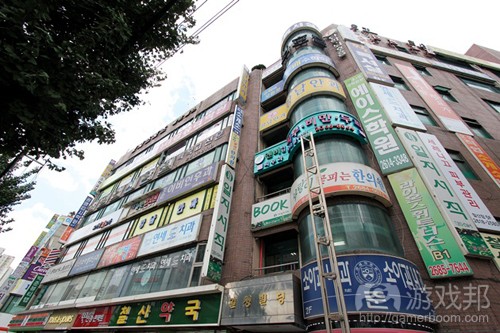过度推送广告或成未来游戏行业趋势
作者:Brandon Sheffield
目前,网络上的提示消息与交叉推广内容似乎已经进入失控状态。Facebook希望我注意到,有个陌生人想要成为我的“好友”。Twitter为让我知晓某个人正在“关注”我的微博,便在每个星期向我发送相关邮件(即使我已经要求屏蔽此类消息)。这就是数字时代的生活。然而,游戏在这一趋势中的发展更是不容乐观,尤其是免费游戏领域。
最简单的垃圾邮件形式包括,你不得不点击打开某款游戏的广告,才能进入自己想玩的游戏中。有时,游戏广告会占据大部分屏幕,但我们可以轻易地忽略这些内容。在我看来,更糟糕的情况莫过于iPad或iPhone会发出提醒——你该为《Tiny Tower》中的Luxury Cruise添置一些旅行道具。
4个小时后,你会再次经历这一过程,所以如果你打算体验该游戏,你可能就不能关掉这些消息窗口。但这会让玩家觉得自己陷入了一种工作状态,比如“等待点击”,或付费便可取消等待,这完全背离了游戏的趣味本质。相较于有趣循环,它更像是强制体验,而这正是此类游戏的盈利方式。
有些游戏需要你时刻关注。其他智能手机应用鲜少出现提示消息,告知你再次登录后,你需要“点击多少物品”——然而,有些游戏却会孜孜不倦地提示你还有“1”个通知,即使你已经点击了所有物品。
一般而言,游戏中至少存在一个需要点击的东西,所以它会不断召唤你的回归,不然为何你要重新进入游戏,点击某个物品呢?不然你怎么会记得点击是件很有趣的事情?游戏就是要不断地在你面前晃,以免你忘记触碰一片玉米地,而后收获许多玉米的快感。这仍然是智能手机和网页平台的免费游戏运行方式。
甚至是进入游戏中,我们还会遇到诸多嘈杂的信息。为何会出现这种情形?显然,游戏公司想要引起玩家的注意,而弹出式广告在网络上也仍然盛行,以此吸引糊涂的父母和家庭主妇透露银行卡信息。如果,你稍微忘记点击游戏中的某些物品,那么你可能会看到如下画面:
在我看来,免费商业模式起源自韩国。上周,我刚好到首尔推广某个项目,然后我发现了一些有趣的东西。在天天接触广告之后,我逐渐习惯性地忽略随处可见的广告。然而,首尔的人们基本上每天都在布满广告的现实生活中穿梭。类似电影中未来的反乌托邦世界,即随铺天盖地的广告标语。
首尔地区还存在一些广告灯地带,然而,无论在哪里停下,比如地铁站、咖啡屋或者加油站,你都会看到满墙的广告。甚至有些公寓外墙花花绿绿地粘贴着一些商业品牌或其它广告。在这次的首尔之旅中,为了省钱,我与好友合住。以下就是离开地铁出口看到的第一栋建筑物。
而这只是在郊区地带(游戏邦注:离聚集许多游戏公司的江南区还有45分钟的火车行程),那儿的人们不得不对广告及视觉噪音不以为然。难怪我所认为的干扰性游戏通知手段却成为这个国家的正常现象。而人们对此现象的越发麻木,只会提高广告的宣传声势,以便吸引玩家的眼球。
许多人认为,这种过度推送通知的现象,以及应用上方总是残留一个“1”符号的广告伎俩终会消失。但我不认同这个看法。原因是,当我们目睹越多的类似广告手段,我们对这一现象就越有免疫力。而这可能导致商家使用更过激的策略来推广游戏。我相信,我们可以做得更好,向玩家呈现出高端的PC型免费游戏。但这还需要一些时间,随着Zynga这类公司开始进军博彩领域,可以预见未来我们还会看到游戏公司更巧妙地使用过度通知的现象。(本文为游戏邦/gamerboom.com编译,拒绝任何不保留版权的转载,如需转载请联系:游戏邦)
Spam Me Not: Shouting above the noise in the game world
by Brandon Sheffield
Notifications and cross-promotions are getting out of control. Facebook wants my attention, to tell me someone I’ve never met wants to be my “friend.” Twitter wants me to know that someone “favorited” my tweet, and then emails me about that once per week even though I’ve asked it not to. That’s just life in the digital age. But games have gotten particularly bad about this, especially in the free-to-play space.
On the simplest level of spamming, you’ll have to click through an ad for a game to get to the one you want to play. Sometimes the ad takes up most of the screen, but this is easy enough to ignore. Worse, I think, is when your iPad or iPhone wakes up to tell you it’s time to restock Tiny Tower’s Luxury Cruise item in the travel shop.
Four hours later, you’ll do it again, not to mention all the quicker items, so maybe you need to actually keep those notifications on if you want to play the game properly. It quickly begins to feel like work — the mechanic of “waiting to click,” and paying to avoid the wait, is pretty much the antithesis of fun. It’s a compulsion more than a fun loop, and that’s why it makes money.
Some of these games don’t ever let you go. There’s that little number notification on your smartphone app, telling you how many “things to click” you have waiting for you upon your return — but some games don’t ever get rid of the “1,” even if you’ve clicked everything.
There’s always at least one thing that needs clicking, so the game can constantly shout at you to return, because otherwise, why would you go back and click? How would you remember that clicking is a fun thing to do? The game needs to constantly be in your face, or else you’ll forget how “fun” it is to touch a field of corn to harvest it. That is still the current face of free-to-play on smartphones and on the web.
Even inside our games we’re getting an incredibly high ratio of noise to content. Why is this? Obviously companies need to get the attention of players, and the pop-up ad is still in effective use across the Internet, compelling confused parents and homemakers to give their bank information to fake Nigerian princes. If, perchance, you do forget to click on a game for a while, this is the sort of thing you might see in-game:
The free-to-play business model was honed in Korea. I was just in Seoul last week pitching projects, and I noticed something interesting. I’ve become so conditioned to ignore advertising that it took me a few days to see it, but normal, everyday people in Seoul are basically living inside of a real-life pop-up ad. That dystopian future we’ve seen in movies, where every surface contains an advertisement–it practically already exists.
There are some advertising-light areas, but anywhere you might pause, like subway stations, coffee shops, or gas stations, is a wall of advertisements. Even apartment complexes are branded by some business or other. For this Seoul trip, I stayed with some friends to save money. This is the first building you see upon leaving their subway exit.
And this is just the suburbs — 45 minutes by train away from the Gangnam district, the financial hub which most Korean game companies call home! People have to be so desensitized to advertising and visual noise just to live their normal lives, it’s no wonder these game notification tactics I consider aggressive are par for the course in the country where the model was perfected. The more desensitized one gets, the louder advertising has to get to grab your attention.
Many have said that the trend toward overnotification and underhanded tactics like always leaving a “1″ hovering over the app is dissipating. I disagree. The more we see of these tactics, the more we come to get used to them. And that may very well mean the tactics will get even more nefarious. I believe we can do better, and high-end PC free-to-play is getting there. But there’s a long road ahead, and as companies like Zynga move into gambling, I foresee even more clever uses of overnotification in our future. (source:gamasutra)
下一篇:分析电子游戏中的三种不同角色类型









































 闽公网安备35020302001549号
闽公网安备35020302001549号